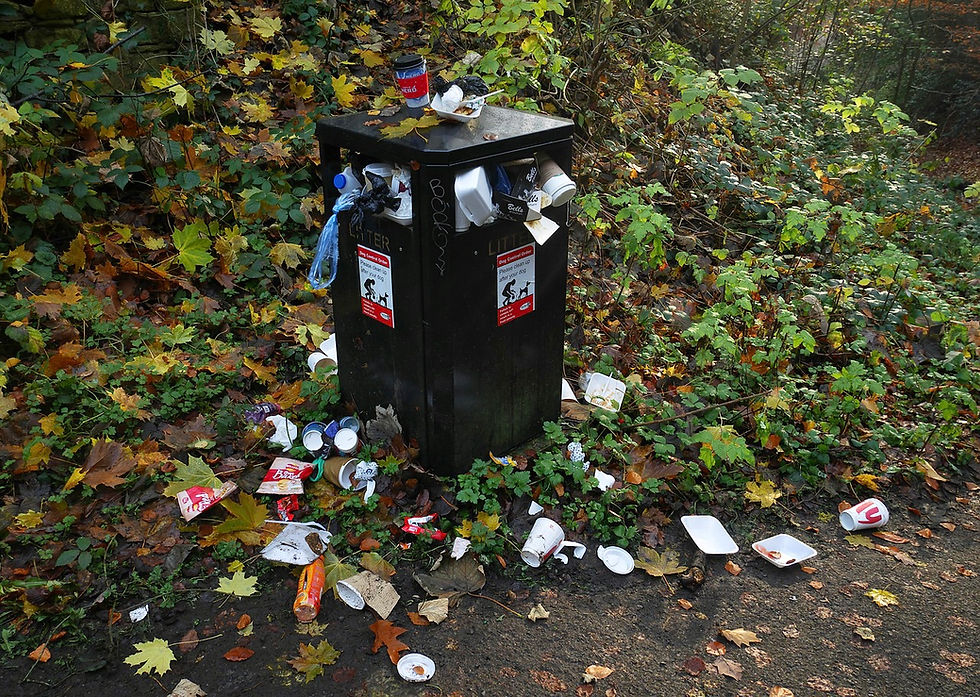Did you know that Washington recently passed two new bans on certain types of packaging products? These packaging laws are intended to protect people from harmful substances like Per- and polyfluoroalkyl substances (PFAS), a group of about 15,000 “forever chemicals.” They're also designed to reduce pollution entering our waterways and ultimately impacting aquatic life.
Check out the story below, written by Puget Soundkeeper's Communications Manager Nicole Loeffler-Gladstone.

Photo courtesy Pixabay.
Packaging Bans
As of May 1, 2024, the following packaging and food service products are banned if they have PFAS intentionally added:
Bags and sleeves.
Bowls.
Flat service ware, including items like plates and trays.
Open-top containers, like French fry cartons and food cups.
Closed containers, like clamshells.
They join wraps, plates, food boats, and pizza boxes, which came under Washington's 2023 PFAS ban.
Beginning June 1, 2024 certain expanded polystyrene (EPS) products are also banned. These include:
Cups.
Plates.
To-go clamshells.
Trays.
Food containers.
Single-use coolers.
They join EPS packing peanuts, which were already banned in Washington.
EPS is often called Styrofoam, but that refers to a specific brand name. The product is rarely included in curbside recycling programs because of the high cost of recycling, and it's a common pollutant on Puget Sound beaches. EPS breaks down into small pieces in the environment, and wildlife can mistake it for food.
Alternative Single-Use Packaging
Beginning in January, 2024, Washington requires compostable products to be clearly labeled and meet certain standards. Consumers should look for compostable products with the right labeling features (green, beige, or brown color or striping, certifier logo, and the word “compostable”).
Avoid manufacturer attempts to “greenwash” their products with words like “biodegradable” or “degradable.” Just because a thin film bag is green doesn't mean it's compostable! Look for the other indicators and be sure to check your municipality's waste management rules before chucking something in your curbside green bin.
The City of Seattle says that municipal compost can become contaminated with plastics and other non-compostable materials. This debris ends up as trash in our landscape, eventually breaking down into microplastics.
Tackling Toxics
As you head into a summer of picnics, cookouts, and outdoor dining, take a moment to consider ways you can opt for reusable containers that are free from toxic chemicals. Orca Salmon Alliance member Toxic Free Future has lots of great resources on their website, with tips for reducing and minimizing toxic exposure at home. And our friends at Zero Waste Washington share FAQs for folks wondering about reuse and repair, low-waste options and more.
Ultimately, though, we can't shop our way out of exposure to toxic chemicals. As Toxic Free Future says, consumers should be able to trust that manufacturers will avoid adding deadly or dangerous substances to their products. Grassroots advocacy and legislation play an important role in regulating and ultimately removing these chemicals from our bodies and environment.
Orca Salmon Alliance's 2024 call-to-action asks the Washington Department of Ecology to ban certain chemicals that have a known toxic effect on aquatic life. Click here to learn more and take action.


